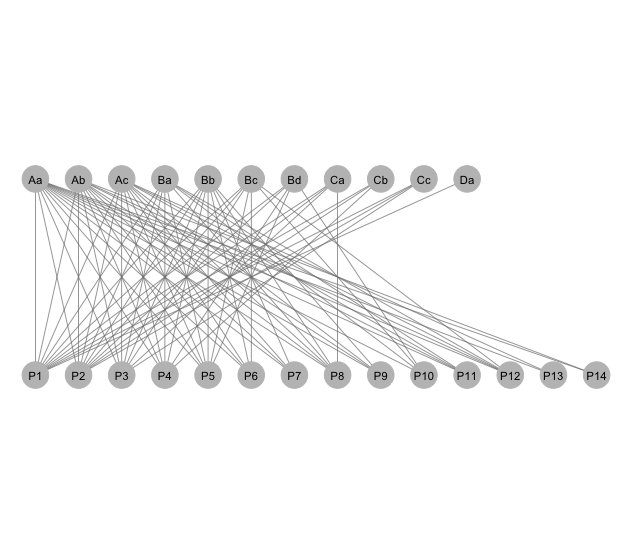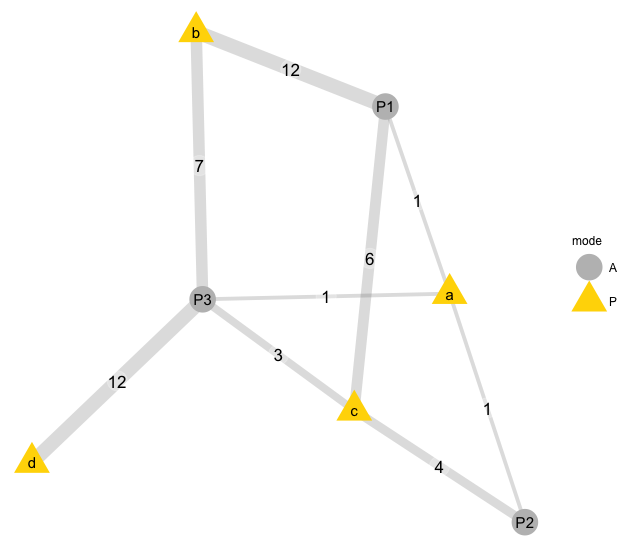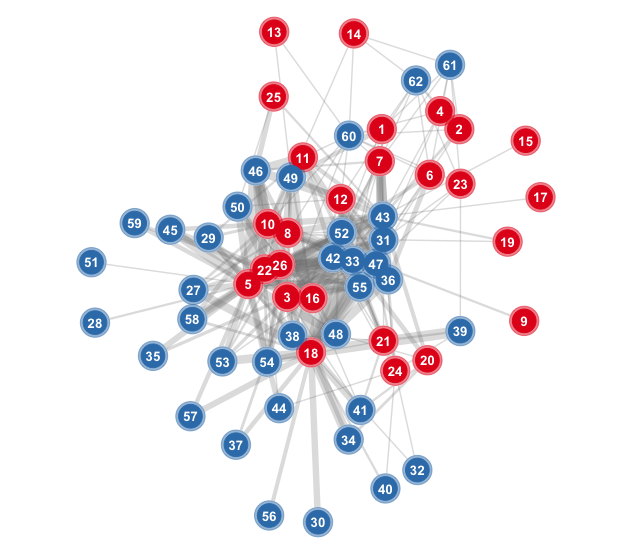The ggbipart package includes a series of R functions aimed to plot bipartite networks. Bipartite networks are a special type of network where nodes are of two distinct types or sets, so that connections (links) only exist among nodes of the different sets.
As in other types of network, bipartite structures can be binary (only the presence/absence of the links is mapped) or quantitative (weighted), where the links can have variable importance or weight.
To plot, we start with an adjacency or incidence matrix. I'm using matrices that illustrate ecological interactions among species, such as the mutualistic interactions of animal pollinators and plant flowers. The two sets (modes) of these bipartite networks are animals (pollinators) and plants species.
From any adjacency matrix we can get a network object or an igraph object for plotting and analysis. The main function in the package is bip_ggnet.
devtools::install_github("pedroj/bipartite_plots")
library(ggbipart)
This graph uses function bip_railway.
# Plot layout coordinates for railway networkplot. Input is the
# adjacency matrix.
#
mymat <- read.delim("./data/data.txt", row.names=1) # Not run.
g<- bip_railway(mymat, label=T)
g+ coord_flip()
This graph uses function bip_ggnet, with labelled edges.
#-----------------------------------------------------------
# Simple graph prototype for a weighted network.
bip= data.frame(P1= c(1, 12, 6, 0),
P2= c(1, 0, 4, 0),
P3= c(1, 7, 3, 12),
row.names= letters[1:4])
col= c("A"= "grey80", "P"= "gold2")
bip.net<- bip_init_network(as.matrix(bip))
bip_ggnet(bip.net, as.matrix(bip),
# color= "mode", palette = col,
edge.label = "weights",
label= TRUE)
#-----------------------------------------------------------
#This graph uses function bip_ggnet, with labelling nodes modified with additional geoms.
#-----------------------------------------------------------
# Numbered nodes
# The Nava de las Correhuelas dataset.
nch<- read.table("./data/sdw01_adj_fru.csv",
header=T, sep=",", row.names=1,
dec=".", na.strings="NA")
nums<- as.vector(c(1:sum(dim(nch))))
pp3<- bip_ggnet(nch.net, as.matrix(nch),
size= 0,
shape= "mode",
palette= "Set1",
color= "mode",
layout.exp = 0.25) +
geom_point(aes(color= color), size= 10,
color= "white") +
geom_point(aes(color= color), size= 10,
alpha= 0.5) +
geom_point(aes(color= color), size= 8) +
geom_text(aes(label= nums),
color= "white", size= 3.5,
fontface="bold") +
guides(color= FALSE) +
theme(legend.position="none") # Hide legend
pp3
#-----------------------------------------------------------
#A detailed descripton of all the above code is in my git pages.



